“Ceramic vs Stainless Steel Cookware: which one is best. (8 Key differences)
Table of Contents
Introduction to Cookware Materials Ceramic vs Stainless Steel Cookware
Cooking delicious meals at home is a true art form, and having the right cookware can make all the difference. When it comes to choosing between ceramic and stainless steel cookware, there are several factors to consider. Both materials have their unique benefits and drawbacks, so it’s important to understand the key differences before making your decision. In this blog post, we’ll explore the characteristics of ceramic and stainless steel cookware, compare their heat distribution and cooking performance, discuss cleaning and maintenance tips, examine price points and longevity, and ultimately help you determine which material is best for your culinary adventures. So grab a cup of tea or coffee (or perhaps a glass of wine!), sit back, and let’s dive into the world of ceramic vs stainless steel cookware!
What is Ceramic Cookware?
Ceramic cookware is a popular choice among home cooks who prioritize health and safety in their kitchen. But what exactly is ceramic cookware? Let’s dive into it!
- Ceramic cookware is made from clay that has been hardened by firing it at high temperatures. This process creates a smooth, non-porous surface that doesn’t react with food or release any harmful chemicals when heated.
- One of the key benefits of ceramic cookware is its excellent heat retention and distribution properties. It heats up evenly, ensuring your food cooks uniformly without any hot spots. This makes it ideal for dishes that require precise temperature control.
- Furthermore, ceramic cookware is known for its non-stick surface. Unlike traditional non-stick coatings which can be toxic when scratched, ceramic coatings are generally considered safe as long as they are not chipped or damaged.
- In terms of durability, ceramic cookware can be delicate and prone to chipping if mishandled or dropped. However, with proper care and maintenance, it can last for many years.
- When it comes to cleaning, most ceramic cookware is dishwasher-safe but handwashing is recommended to prolong its lifespan. Avoid using abrasive scrubbers or harsh cleaning agents as they may damage the coating.
- Ceramic cookware offers a healthier alternative to traditional non-stick pans while providing excellent cooking performance. Its stylish appearance and eco-friendly nature make it an attractive option for those who value both functionality and aesthetics in their kitchen tools
What is Stainless Steel Cookware?
Stainless steel cookware has gained popularity in recent years for its sleek appearance and durability. But what exactly is stainless steel cookware?
- Stainless steel is a type of alloy made from a combination of metals, including iron, chromium, and nickel. This unique combination gives stainless steel its distinctive properties – it’s resistant to rust, corrosion, and staining. It also provides excellent heat conduction, allowing for even cooking.
- One key advantage of stainless steel cookware is its versatility. It can be used on any type of stovetop – gas, electric, or induction – making it suitable for all types of kitchens.
- Another benefit of stainless steel cookware is that it does not react with acidic or alkaline foods. This means you can safely prepare tomato-based sauces or citrusy dishes without worrying about the taste being affected.
- While some may argue that stainless steel doesn’t have the non-stick properties found in other materials like ceramic or Teflon-coated pans, many chefs appreciate the ability to create fond (the browned bits at the bottom) while cooking meat or vegetables as this adds flavor to sauces and gravies.
- In addition to these benefits, stainless steel cookware is known for being easy to clean and maintain. It’s dishwasher safe and doesn’t require special cleaning agents or techniques.
- Stainless steel cookware offers durability, versatility, and ease of use that make it a popular choice among home cooks and professional chefs alike.
Key Differences in Material and Durability Ceramic vs Stainless Steel Cookware
When it comes to choosing cookware, one of the most important factors to consider is the material and durability. Ceramic and stainless steel cookware differ significantly in these aspects.
Material:
Ceramic cookware is made from clay that has been kiln-fired at high temperatures. It typically has a nonstick coating made from natural materials like sand or stone. On the other hand, stainless steel cookware is primarily composed of iron, carbon, and chromium, which gives it its characteristic shine.
Durability:
In terms of durability, ceramic cookware can be more fragile compared to stainless steel. While it may offer excellent heat resistance and even cooking performance when used properly, it can chip or crack if dropped or mishandled. Stainless steel cookware, on the other hand, is known for its ruggedness and ability to withstand high temperatures without warping or corroding.
Another distinction lies in their weight – ceramic tends to be lighter than stainless steel due to its composition. However, this also means that ceramic pots and pans may not retain heat as well as their heavier counterparts. Additionally! The longevity of both types of cookware varies. Ceramic coatings can wear off over time with regular use while stainless steel maintains its appearance for longer periods with proper care.
Ultimately! Your choice between ceramic and stainless steel will depend on your specific needs and preferences in terms of material properties such as weight,! durability,! ease-of-use,! and aesthetics.!
Heat Distribution and Cooking Performance Comparison of Ceramic vs Stainless Steel Cookware
When it comes to heat distribution and cooking performance, both ceramic and stainless steel cookware have their strengths. Ceramic cookware is known for its excellent heat retention properties. Once heated, it distributes the heat evenly across the surface, ensuring that your food cooks evenly without any hotspots.
On the other hand, stainless steel cookware may not distribute heat as evenly as ceramic but offers superior searing capabilities. Its ability to withstand high temperatures makes it perfect for browning meats or achieving that perfect crispy exterior on foods like fish or chicken.
Ceramic cookware’s heat distribution also means that you can cook at lower temperatures compared to stainless steel, which can help preserve nutrients in your food while reducing energy consumption. Stainless steel’s ability to conduct heat quickly allows for precise temperature control during delicate tasks like melting chocolate or simmering sauces. Both materials have their advantages when it comes to cooking performance; choosing between them depends on your specific needs and preferences in the kitchen. Whether you prioritize even heating or searing abilities will determine which material suits you best.
Pros and Cons of Ceramic Cookware
Advantages
Ceramic cookware boasts non-stick properties, ensuring that your culinary creations effortlessly slide off the surface. The even heat distribution is a significant perk, preventing hotspots and allowing for consistent cooking. Additionally, ceramic pans are a breeze to clean, making post-cooking chores a delight.
Disadvantages
However, concerns about durability linger with ceramic cookware. It may not withstand rough handling, and the limited high-heat use poses challenges for certain cooking techniques. Furthermore, the propensity to chip raises maintenance considerations.
Pros and Cons of Stainless Steel Cookware
Advantages
Stainless steel cookware takes pride in its durability and longevity. Its versatility in accommodating various cooking methods, from stovetop to oven, sets it apart. Moreover, the convenience of being dishwasher-safe adds to its appeal.
Disadvantages
On the flip side, stainless steel lacks the non-stick properties found in ceramic counterparts. Uneven heat distribution may be a concern for some, and maintenance can be a bit more involved.
Performance Comparison of Ceramic vs Stainless Steel Cookware
When it comes to performance, the battle is fierce. Heat retention and conductivity become pivotal factors, influencing the outcome of your culinary endeavors. The cooking versatility of both materials plays a significant role, and the long-term durability of your investment is crucial.
Health Considerations
Delving into the health aspects, we scrutinize the impact of materials on food safety. Are there harmful substances lurking in your cookware? Both ceramic and stainless steel have their own set of considerations in this regard.
Cleaning and Maintenance of Ceramic vs Stainless Steel Cookware
Cleaning and maintaining your cookware is an essential part of keeping it in good condition and ensuring its longevity. When it comes to ceramic vs stainless steel cookware, there are some key differences in terms of cleaning and maintenance.
- Ceramic cookware is known for its non-stick surface, which makes it relatively easy to clean. You can simply wipe off any food residue with a soft cloth or sponge. However, you should avoid using abrasive cleaners or scrubbers as they can damage the ceramic coating.
- Stainless steel cookware, on the other hand, requires a bit more effort when it comes to cleaning. It doesn’t have a non-stick surface, so food may stick to the bottom if not properly attended to. To remove stubborn stains or burnt-on food, soaking the pan in warm soapy water before scrubbing with a non-abrasive pad is recommended.
Both types of cookware can be cleaned by hand washing or using a dishwasher. However, remember that frequent use of the dishwasher may cause discoloration or dullness on stainless steel pans over time. To maintain the quality of ceramic cookware, avoid sudden temperature changes as this can cause cracking. Also, be cautious when stacking them together as they can chip if handled roughly.
In terms of maintenance, stainless steel cookware tends to be more durable and resistant to scratches than ceramic cookware. However, stainless steel may develop stains or water spots if not dried immediately after washing. Both ceramic and stainless steel cookware require regular cleaning and care to ensure their performance and lifespan. The choice between them ultimately depends on your preferences regarding ease of cleaning and durability.
Price Comparison and Longevity of Each Material
When it comes to choosing cookware, price is often a deciding factor. Ceramic cookware tends to be more affordable compared to stainless steel options. This is because ceramic materials are less expensive to produce. On the other hand, stainless steel cookware can be pricier due to its durability and high-quality construction.
In terms of longevity, both ceramic and stainless steel cookware have their advantages. Ceramic cookware has a non-stick surface that can wear off over time with regular use. However, if taken care of properly by avoiding metal utensils and using gentle cleaning methods, it can last for several years. Stainless steel cookware is known for its long-lasting durability. It is resistant to scratches and dents, making it a great investment in the long run. With proper maintenance, such as regular seasoning or polishing to prevent discoloration or rusting, you can enjoy the benefits of stainless steel cookware for many years. Your budget and cooking needs will determine which material is best for you when considering price and longevity factors in your decision-making process
Which Cookware Material is Best for You? Factors to Consider Ceramic vs Stainless Steel Cookware
When choosing between ceramic and stainless steel cookware, there are several factors to consider to determine which material is best suited for your cooking needs.
- One important factor to take into account is heat conductivity. Ceramic cookware tends to have better heat retention, meaning it stays hotter for longer after the heat source is removed. This can be beneficial for slow cooking or keeping food warm. On the other hand, stainless steel has excellent heat distribution properties, ensuring that your food cooks evenly.
- Durability is another key consideration. Ceramic cookware is generally more fragile and prone to chipping or cracking if mishandled or dropped. Stainless steel, on the other hand, is highly durable and resistant to scratches and dents.
- Maintenance also plays a role in choosing the right cookware material. Ceramics require careful handling and maintenance as they can easily get stained or discolored over time. It may also require special cleaning agents or techniques to remove tough stains. Stainless steel, on the other hand, is easy to clean and maintain as it does not stain easily and can withstand regular use without losing its shine.
- Cost may also play a role in your decision-making process. Ceramic cookware tends to be more expensive than stainless steel due to its specialized manufacturing process and unique features such as non-stick surfaces or decorative designs.
The best cookware material for you depends on your individual preferences and cooking style. Consider factors such as heat conductivity, durability, maintenance requirements, cost, and even aesthetic appeal when making your choice between ceramic and stainless steel cookware.
Conclusion
After comparing the key differences between ceramic and stainless steel cookware, it’s clear that both materials have their unique benefits. Ceramic cookware offers a non-stick surface, even heat distribution, and attractive designs. On the other hand, stainless steel cookware is durable, versatile, and easy to maintain. When choosing between ceramic and stainless steel cookware, it’s important to consider your cooking style, preferences, and budget. If you prioritize non-stick properties and aesthetic appeal, then ceramic cookware might be the best choice for you. However, if durability and versatility are more important factors for you in the long run or prefer a more classic look in your kitchen arsenal, stainless steel is worth considering.
Ultimately, the decision boils down to personal preference. Both ceramic and stainless steel cookware offer excellent cooking performance when used correctly. So go ahead and choose the material that fits your needs as well as complements your culinary skills! Remember to take good care of whichever type of cookware you choose by following proper cleaning instructions from manufacturers’ guidelines – this will ensure its longevity! With proper maintenance, your chosen set will undoubtedly become an indispensable part of your kitchen arsenal for years to come.
So there we have it – a comprehensive comparison of ceramic vs stainless steel cookware! We hope this guide has provided valuable insights into these two popular materials so that you can make an informed decision before investing in new pots or pans.
Happy cooking!
FAQs about Ceramic vs Stainless Steel Cookware
- Is ceramic cookware safer than stainless steel for cooking?
- Both ceramic and stainless steel are generally considered safe for cooking. However, individual preferences and usage patterns may influence the perception of safety.
- Can stainless steel cookware replace non-stick pans?
- While stainless steel is versatile, it may not provide the same non-stick properties as dedicated non-stick pans.
- What is the average lifespan of ceramic cookware?
- The lifespan of ceramic cookware varies based on usage and care. On average, well-maintained ceramic cookware can last several years.
- Do I need special utensils for stainless steel cookware?
- Using non-abrasive utensils is recommended to prevent scratching the surface

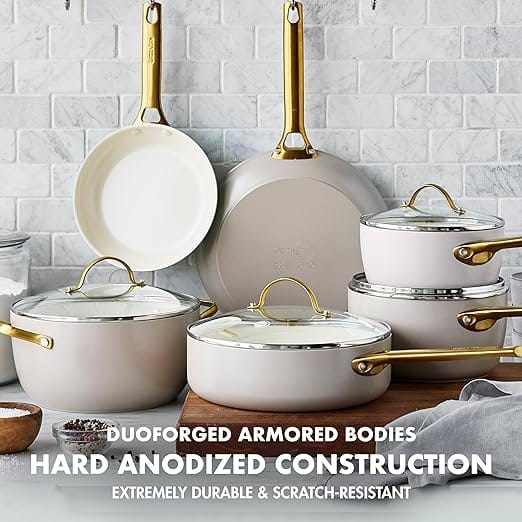
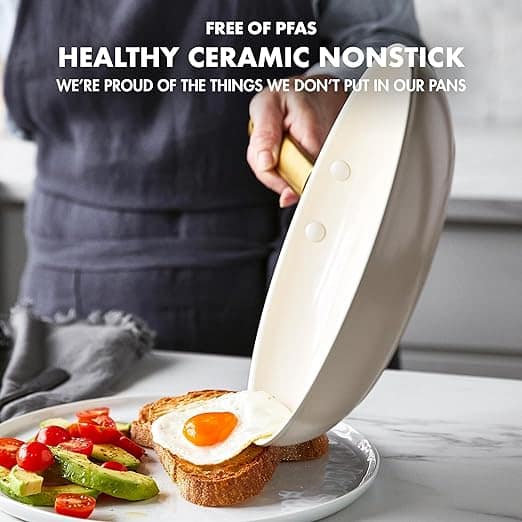
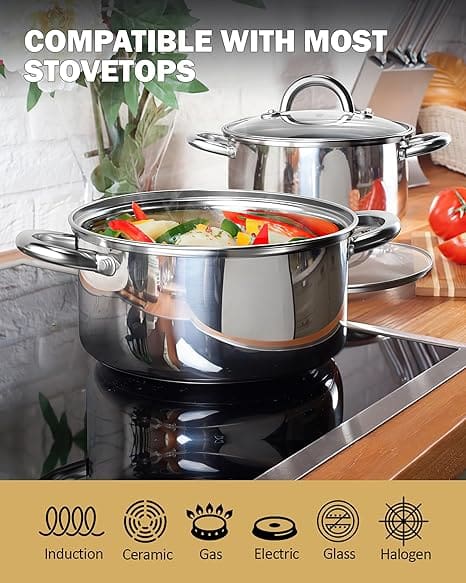
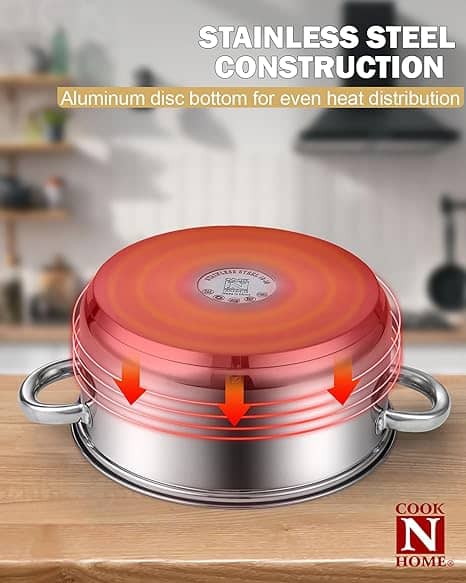











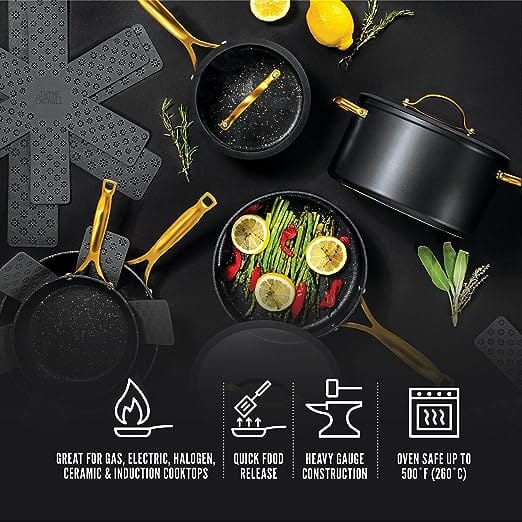
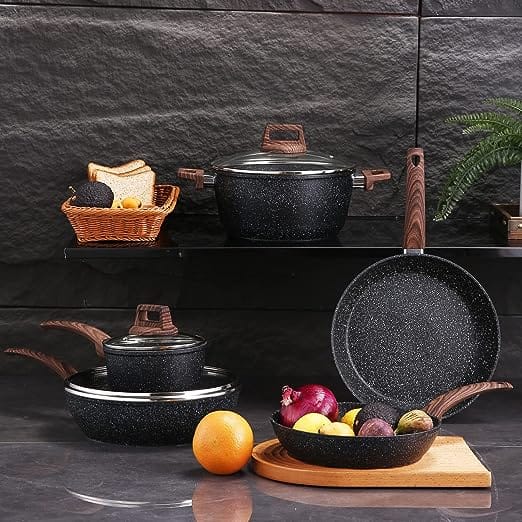

2 Comments